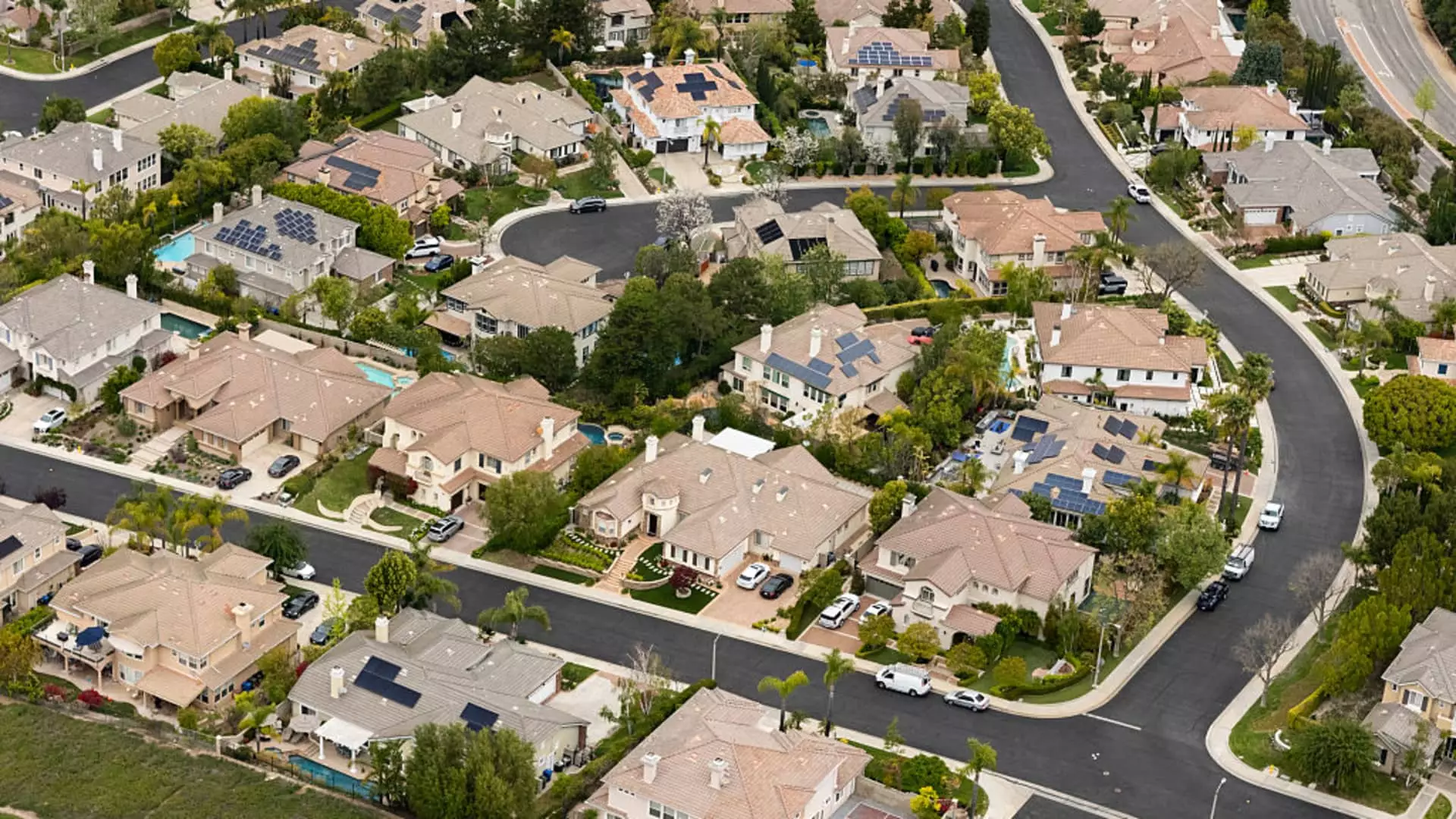The American housing market, following the initial frenzy elicited by the pandemic, has emerged not as a beacon of hope for homeownership but rather a chilling reminder of the systemic issues deeply rooted within our economy. With the housing prices drastically inflated—39% higher in March 2023 compared to pre-pandemic levels—it’s essential to dissect what has gone awry and who is bearing the brunt of this crisis. The statistics are stark and troubling, shedding light on a painful truth: affordable housing is becoming an elusive dream, particularly for lower- and middle-income Americans.
The Disparity of Supply: A Tragedy in Progress
Indeed, while the demand for housing remains robust, it has become painfully apparent that the supply of homes—especially those affordable for average Americans—is catastrophically insufficient. National statistics reveal a dire scenario, where the lower and middle market segments are continuously underperforming while the high-end sector thrives. A recent report from the National Association of Realtors and Realtor.com underscores this disparity. For households earning between $75,000 and $100,000, the availability of homes they can afford has only marginally improved to 21.2%. Compare this with the near half of listings they could consider back in March 2019—this is nothing short of a crisis for so many families who want to be homeowners but find themselves priced out daily.
The alarming trend doesn’t merely stop there; those earning less than $75,000 face an even bleaker reality. Buyers with a $50,000 income can now afford a diminutive 8.7% of available listings—a staggering drop from just a few years ago. The stark inequity here screams for attention and policy reform. Why must hard-working Americans be stuck in a space where their earnings dictate not just their lifestyle but their very ability to secure shelter?
Middle America: Choking on Progress
What is particularly disheartening is the report’s portrayal of the market’s uneven progression. Although some regions in the Midwest and South have begun to experience a balance—places like Akron and St. Louis show promise—this doesn’t translate to a nationwide solution. We are left pondering if these slight improvements are mere blips in a much larger system failure. The reality remains that 40% of the nation’s largest metropolitan areas are still struggling to offer any semblance of affordable options. Seattle and Washington, D.C., for instance, present the absurd situation where families must earn upwards of $150,000 just to wade through half of the available listings.
Nowhere is this paradox more pronounced than in traditionally high-demand locales, including Southern California and New York City. How can we allow such an economic mad-lib where cities boasting vast wealth and innovation suppress the very individuals that fuel their economies? The social contract appears to be fraying, and the impacts are starkly visible in the quality of life across these areas.
The High-Cost Gravitational Pull on New Developments
As housing prices remain elevated, new construction becomes increasingly unfeasible. Builders struggle under the weight of escalating construction costs fueled by tariffs and complex zoning regulations. The challenges of land scarcity, particularly in densely populated regions, only compound the problem. With single-family housing starts down almost 10%, the situation only continues to deteriorate.
Instead of addressing these boundary-stitched policies that stifle growth, too many politicians prefer to watch from the sidelines while American families grapple with chronic housing instability. This is not just a real estate issue; it’s an economic disaster in the making, threatening to erode the very fabric of our communities. Homebuilders are attempting to pivot towards introducing affordable options, but how can they succeed in a climate that stifles innovation and risk-taking?
A Challenge to Imagine Greater Horizons
To those in power, the path forward is clear, yet obscured by a web of bureaucracy and entrenched interests. The data illustrated in these recent reports begs for a mix of creativity and policy innovation. We must dismantle bureaucratic roadblocks that thwart sustainable, affordable housing options affecting the working class. Engaging local governments, community stakeholders, and even private market solutions can yield a housing market that is fair and equitable for all.
In light of these revelations, one thing becomes evident: the American Dream is slipping further away from those who need it most. The burgeoning chasm between those who can afford homes and those who cannot is not just an economic issue; it’s a profound social injustice that, if left unaddressed, threatens the prosperity and integrity of our society. It’s time for us to demand smarter policies that prioritize creating a balanced, inclusive housing market instead of allowing it to spiral out of control. The future of our communities hinges on it.

